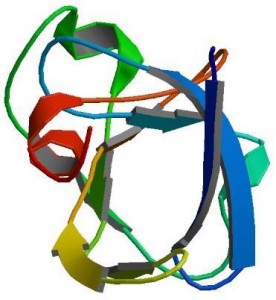WEDNESDAY, 28 SEPTEMBER 2011
The community, many of whom have no scientific background, are from an online multiplayer videogame called Foldit, in which players from around the world attempt to manipulate graphics of protein residues to produce the highest scoring (lowest energy) configuration. Players are scored based on how well they compact the protein, bury hydrophobic residues and avoid spatial clashes. Completing a puzzle earns gamers points, which they can use to access new puzzles.Protein folding is a complex process, resulting in a highly specific arrangement of groups. This arrangement is vital for protein function, and so structure prediction is essential for understanding the roles of proteins, determining drug targets, and designing new proteins to treat disease. This is extremely computationally expensive and takes a lot of time. But the Foldit project uses human 3-dimensional pattern-matching skills and the ingenuity of gamers in puzzle solving to make progress which computers alone cannot. This is the first instance of ‘games with a purpose’ being used to provide a solution to a longstanding scientific problem [1].
A download of the game can be found at http://foldit.centerforgamescience.com
Written by Anand Jagatia

